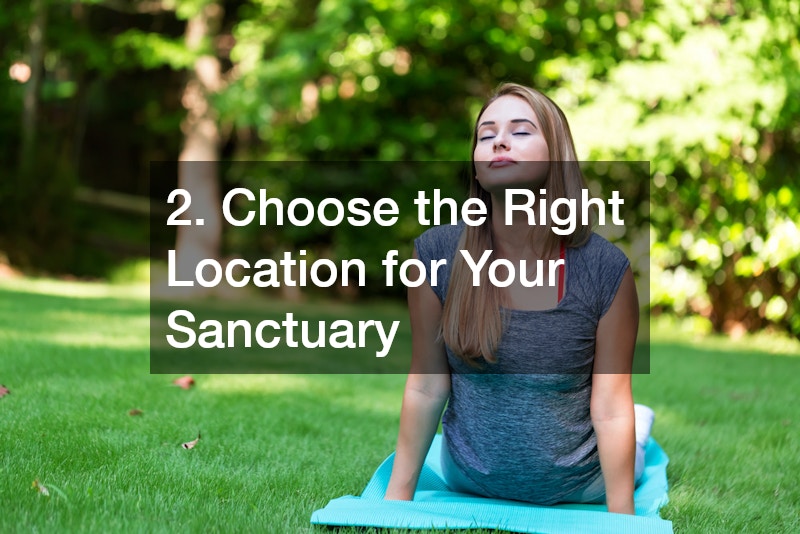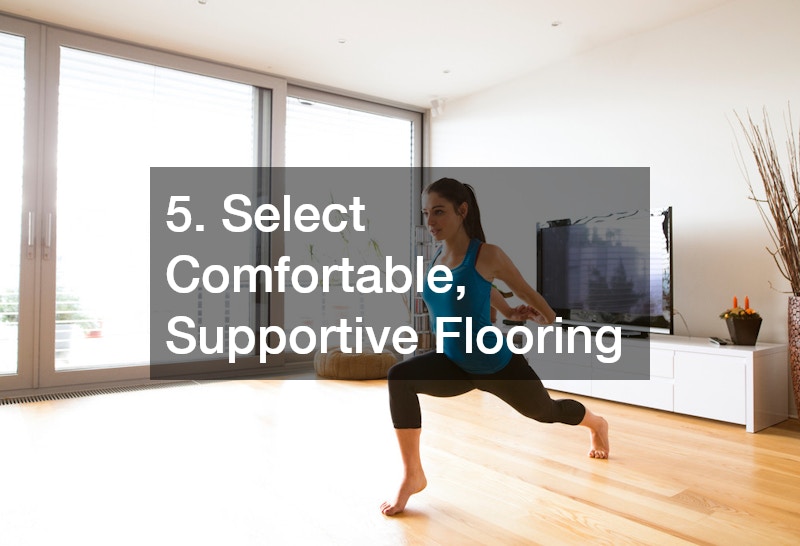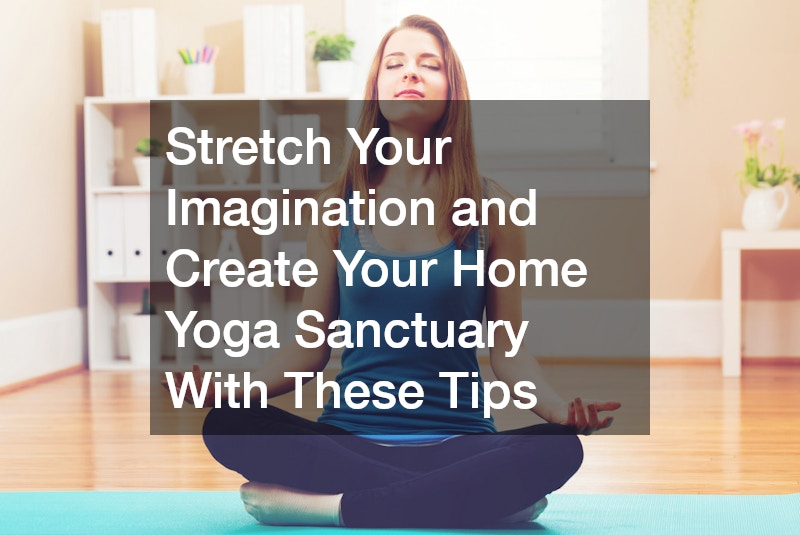Disclaimer: Life Cover Guide. This site provides family & home content for informational purposes only.
In the fast-paced world we live in, creating a personal retreat within the confines of your own home is more important than ever. A home yoga sanctuary is not just a physical space, but a mental and emotional refuge where you can practice mindfulness, flexibility, strength, and peace. Whether you’re a seasoned yogi or someone who wants to start incorporating yoga into your daily routine, having a dedicated sanctuary will elevate your practice. Here’s how you can transform any space into your ideal yoga sanctuary, one that encourages both your physical and mental growth.
1. Why Create a Home Yoga Sanctuary?
The idea of a home yoga sanctuary goes beyond simply setting aside a corner for mat work. It’s about creating a space that supports your entire well-being, offering a sense of tranquility and focus that enhances your practice. Whether you prefer quiet meditative sessions or more intense flows, a dedicated space, like a yoga sanctuary room, provides the mental clarity needed to deepen your connection to your practice.
Incorporating yoga into your lifestyle is not just about physical benefits but also mental and emotional wellness. Having a space specifically for yoga enables you to disconnect from the outside world and enter a zone where you can fully embrace mindfulness. A home yoga sanctuary becomes a refuge from stress and the clutter of daily life, helping you find calm, improve focus, and increase physical strength. Most importantly, it serves as a reminder to prioritize self-care. Additionally, for those who love blending their practice with nature, incorporating elements of outdoor living spaces can elevate the experience, offering a tranquil connection to the outdoors. Once you recognize the importance of dedicating a specific area for yoga, the next step is choosing the right location for your sanctuary.
2. Choose the Right Location for Your Sanctuary

The location of your yoga sanctuary is essential for creating an environment that enhances your practice. It should be a space where you can move freely and comfortably, without distractions. Choosing a spot that is quiet, away from the hustle and bustle of daily life, will help you enter a meditative state and deepen your practice. Here are a few possible areas to consider for your yoga sanctuary:
Indoor Sanctuary Spaces
If you have the luxury of extra space in your home, a spare room could be an ideal location for your yoga sanctuary. A room that offers ample space will allow for more freedom of movement, making it perfect for flows, poses, and relaxation. However, even a corner of a larger room, such as a living room or bedroom, can be transformed into a serene practice space. Just be sure to remove any unnecessary distractions, ensuring that your sanctuary remains a calm and peaceful environment.
Connecting With Nature Through Windows
If you’re lucky enough to have a room with windows that allow natural light to pour in, you’re in a great spot to set up your sanctuary. Sunlight can help lift your mood and provide a positive, energizing atmosphere for your practice. A space with views of nature—whether it’s your backyard, garden, or trees—can make your practice even more fulfilling. If your room lacks natural light or views, consider adding light fixtures that simulate daylight to brighten the area and maintain a calm, welcoming ambiance.
Outdoor Living Spaces
For those who want to incorporate nature directly into their practice, outdoor living spaces can be a perfect solution. Creating a yoga sanctuary outdoors allows you to connect with the elements, offering a sense of tranquility and grounding energy. Landscape design plays an important role here; consider setting up your sanctuary in a space with calming features like a quiet garden or a shaded patio. If trees or other large plants are part of your outdoor space, you can work with tree services to ensure that your practice area remains free of obstructions, providing a peaceful, secure environment for meditation and movement.
3. Declutter Your Space for a Clear Mind

One of the first steps in creating your yoga sanctuary is to declutter your environment. A tidy, minimalistic space promotes mental clarity and focus, both of which are crucial for a successful yoga practice. Remove unnecessary furniture, decorations, or items that don’t contribute to the energy you want in your sanctuary. Keep only what is essential for your practice—your mat, props like blocks or straps, and perhaps a small table for candles or incense. By simplifying the surroundings, you allow your space to support your intention of peace and mindfulness.
The act of decluttering extends beyond physical items. A clutter-free mind is essential for yoga, as it allows you to concentrate fully on your movements and breath. Organize your space in a way that helps maintain this clear mental space, whether it’s through clever storage or a minimalist approach to decoration. Custom cabinet design is a great solution for keeping your yoga props and accessories neatly stored, reducing clutter and maintaining a sense of calm. A clean environment creates a serene atmosphere conducive to relaxation and mindfulness, making your practice more meaningful and focused.
4. Create a Calm Ambience With Lighting
Lighting is an essential element in setting the mood and tone for your yoga sanctuary. The right lighting can enhance your practice, promoting relaxation and mindfulness. Here are some lighting tips to help create a peaceful atmosphere:
Soft, Ambient Lighting
Soft, ambient lighting is crucial for cultivating a calming environment in your yoga space. Bright, harsh lights can be disruptive and prevent you from fully relaxing. Instead, opt for softer sources of light that gently illuminate the room without overwhelming your senses. Lamps, string lights, or dimmable fixtures can provide the perfect warm glow, allowing you to adjust the lighting depending on the energy you need during your practice. For example, during a morning flow, a brighter setting may energize you, while dimming the lights during evening restorative poses promotes tranquility and calm.
Natural Light and Daylight Simulators
If your sanctuary has windows that allow natural light to flow in, take advantage of this free, energizing source. Sunlight can elevate your mood and create a connection to nature, making your practice feel more grounded. However, if your space lacks natural light, you can replicate daylight with artificial lighting options designed to mimic the effect of sunlight. These lights help brighten your room with a gentle, natural tone that will still maintain the peaceful ambiance you’re seeking.
Candles and Himalayan Salt Lamps
For an added touch of serenity, consider incorporating candles or Himalayan salt lamps into your space. Candles, whether scented or unscented, offer a soft flickering light that promotes relaxation and mindfulness. Himalayan salt lamps are especially popular in yoga spaces because they emit a warm, soothing glow and are thought to help purify the air, contributing to an overall peaceful atmosphere.
If you want to ensure that your lighting is perfectly set up for both aesthetics and functionality, consider professional electrician services. An electrician can help install lighting that fits your space and meets your specific needs, such as installing dimmable switches or creating a lighting scheme that enhances both your practice and the overall mood of the room.
5. Select Comfortable, Supportive Flooring

The flooring in your yoga sanctuary plays a significant role in both your comfort and safety. While your yoga mat offers cushioning for your practice, the underlying floor material can impact your experience, providing stability and support during various poses. Here are a few flooring options to consider for your yoga space:
Natural Flooring Options
When choosing a floor material, look for options that offer both durability and comfort. Hardwood floors, cork, or bamboo are all excellent choices for yoga spaces. These natural materials are not only sustainable but also provide a solid foundation with good grip for your yoga practice. They help ensure stability during standing poses, balance work, and transitions. The firm yet smooth surface of these materials makes them ideal for maintaining control and proper alignment during your movements.
Adding Extra Cushioning
While natural floors provide solid support, you may want additional cushioning for comfort, particularly during seated poses, inversions, or restorative practices. A soft rug or mat can be a great solution. Choose a rug that offers a plush surface for added comfort, but ensure it doesn’t interfere with the stability you need for your yoga practice. For the best of both worlds, consider placing a non-slip mat underneath the rug to keep it in place during your practice.
Choosing the Right Yoga Mat
Yoga mats come in various thicknesses, allowing you to choose the level of cushioning that works best for you. A thicker mat may be ideal for comfort during seated or reclining poses, while a thinner mat offers greater stability for standing poses or balance exercises. It’s essential to select a mat that complements your flooring, ensuring it stays in place without sliding around. A quality mat combined with the right floor can help prevent injuries and enhance the overall experience of your practice.
Maintaining Cleanliness
Once you’ve selected the right flooring and mat for your sanctuary, it’s important to keep the area clean and hygienic. Regular cleaning of your mat and rug is essential to maintain a fresh environment. A professional rug cleaner can help keep your rug or mat looking and feeling like new, ensuring your yoga space remains inviting and peaceful.
6. Incorporate Nature for Grounding Energy
Incorporating elements of nature into your home yoga sanctuary can deeply enhance the grounding energy of the space. Plants, flowers, natural wood furniture, stones, and other organic elements help create a connection to the Earth and bring in calming, nurturing energy. Indoor plants, such as succulents, ferns, or peace lilies, not only improve the air quality but also add a refreshing, lively vibe to the room.
A small water feature, such as a tabletop fountain, can also contribute to a peaceful atmosphere, adding the sound of gently flowing water to your practice. If your sanctuary has a window, consider placing your mat near the window so you can enjoy the outdoors, or even practice in the presence of greenery or a garden. By bringing the outdoors in, you will create a nurturing, peaceful environment conducive to reflection, breathwork, and physical movement.
7. Ensure Comfort With Proper Temperature Control
A comfortable temperature is essential for a fulfilling yoga practice. If the room is too hot, you may feel sluggish or distracted; if it’s too cold, you may have trouble staying limber and relaxed. To create the ideal environment, set the room to a temperature that feels comfortable and conducive to movement. Some people prefer cooler temperatures for more energetic practices like vinyasa or ashtanga, while others enjoy warmth for practices like yin or restorative yoga.
Regulating Temperature With Fans or Heaters
To achieve the perfect balance, consider using fans or space heaters to regulate the temperature. Fans can help circulate air and keep the room cool during more intense sessions, while space heaters provide warmth in cooler months. For added warmth, a heated blanket or floor mat can help keep your muscles relaxed and ready for practice. By carefully adjusting the temperature, you create a space where you can stay comfortable and focus entirely on your movements.
Maintaining Airflow and Ventilation
Good ventilation is key, especially during the warmer months. If your yoga sanctuary gets too warm, consider using air conditioning or a ventilation system to ensure a comfortable airflow. An air purifier can also help improve air quality by filtering out dust or allergens, making it easier to breathe deeply as you practice. If you’re looking for a more permanent solution, heating and air conditioning systems can help maintain consistent temperatures year-round, ensuring comfort in every season.
For a more customized approach to temperature regulation, HVAC services can optimize your heating and cooling systems for your yoga space. Professionals can assess your sanctuary’s needs and recommend solutions that enhance both comfort and energy efficiency. With the right climate control system in place, you can ensure that your yoga space remains a peaceful and inviting environment throughout the year.
8. Create a Sense of Ritual With Scent and Sound

Adding scent and sound to your yoga sanctuary can enhance your sense of ritual and mindfulness. Aromatherapy is a popular way to heighten the sensory experience. Essential oils, such as lavender for relaxation or citrus for energy, can be diffused in the space. Incense is another option that offers both scent and a visual aspect, creating a calming ritual as the smoke rises.
For sound, consider creating a playlist of calming music or nature sounds. Sounds of birds chirping, wind rustling, or ocean waves crashing can help you feel more connected to the earth. For those who prefer silence, focusing on your breath as you move through your practice is also an effective way to deepen the experience. However you choose to use sound, it should serve to enhance your focus, not distract from it.
9. Make Your Sanctuary a Dedicated, Sacred Space
Finally, the key to a true yoga sanctuary is creating a space that feels sacred and dedicated exclusively to your practice. This means treating the area with respect, keeping it free of clutter and distractions, and perhaps even establishing a regular ritual when entering the space. Dedicate a specific time each day to practice, ensuring that your sanctuary becomes an integral part of your daily routine. Over time, this consistency will help solidify the space as a retreat where you can fully immerse yourself in mindfulness.
Personalizing Your Space
To make the space uniquely yours, consider adding meaningful items that inspire and align with your practice. You could include a statue, altar, or artwork that reflects your yoga philosophy or spiritual beliefs. These items will not only enhance the ambiance of your sanctuary but also provide visual reminders of your intentions and connection to your practice. Remember, a sacred space doesn’t have to be large or ornate; it simply needs to be intentional, offering an environment that fosters inner peace and growth.
Creating a Sense of Privacy and Peace
For a more tranquil and private environment, consider incorporating window coverings to provide both privacy and a controlled amount of natural light. Window coverings such as blinds, shades, or curtains can help block out external distractions and create a peaceful atmosphere, allowing you to focus completely on your practice. Whether you prefer an abundance of light or a more subdued ambiance, the right window coverings can further enhance the feeling of sanctuary in your space. This quiet, dedicated area will eventually become a refuge—a place where your body, mind, and spirit can align and find peace.
Closing Thoughts
Creating your own home yoga sanctuary doesn’t need to be complicated or expensive. By focusing on intention, design, and creating an environment that aligns with your practice, you can craft a space that nurtures both body and mind. As you design your sanctuary, remember that it’s a personal journey—a space where you can escape, find grounding, and stretch your imagination, just as you do in your practice.



